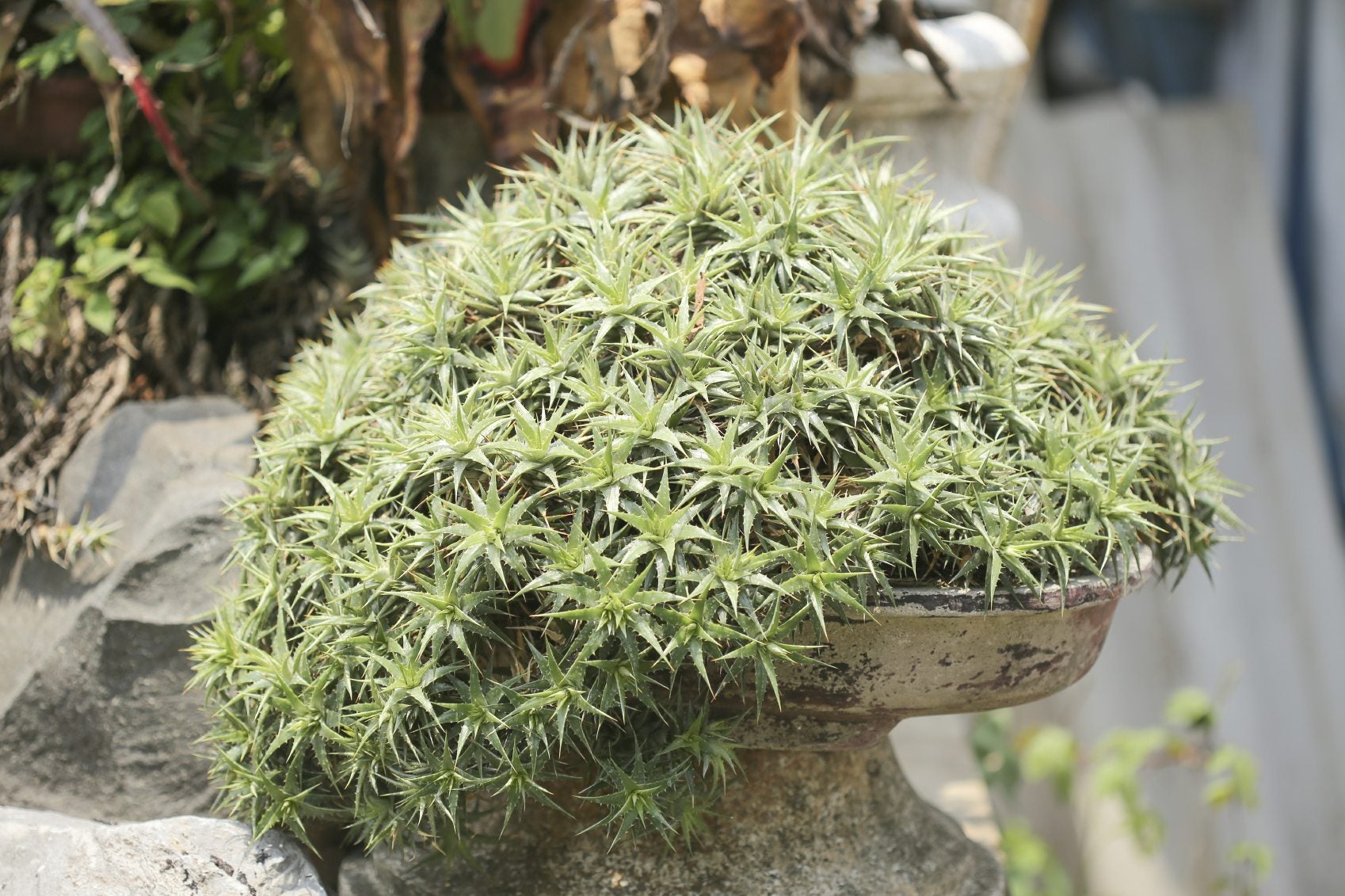Dyckia Plant Info: Tips On Growing Dyckia Plants


Bromeliads are fun, tough little plants that have become popular as houseplants. The Dyckia group of bromeliads primarily comes from Brazil. What are Dyckia plants? These are semi-succulent rosettes that may produce some astounding flower spikes. Some of the varieties are terrestrial while others are found on rocks in their native range. They have remarkable drought tolerance for short periods of time and can even withstand a brief freeze. All in all, growing these plants is easy and rewarding, but a little Dyckia plant info should put you on the path to guaranteed success.
What are Dyckia Plants?
Dyckia are bromeliads sharing that group’s characteristic rosette shape. They are not technically succulents, as they do not store water in their leaves, but they do have similar thick, waxy foliage. Dyckia are xeriscape plants and can withstand long periods without moisture. The leaves vary from long and strappy to short and scalloped. All foliage is fairly rigid and may be smooth or serrated and a solid color or variegated or spotted. Long stalks with multiple red, yellow, or orange flowers appear in spring. The wide range of varieties ensures that there is a specimen for every taste. In addition to Brazil, these bromeliads are also found in Uraguay, Paraguay, Argentina, and Bolivia. A bonus bit of Dyckia plant info; the genus is named for Prince von Salm-Kyck, an amateur collector of succulents.
Dyckia Growing Conditions
Most of the plants we cultivate in the group Dyckia are from Brazil. They survive in warm regions with heavy rainfall for half the year and very dry conditions the rest of the time. This makes Dyckia care slightly challenging, as getting the right balance of moisture to keep the plant happy may be difficult. Dyckia growing conditions in their natural setting should be mimicked as much as possible. Try growing Dyckia plants outside in summer or year-round in warmer regions. In their native region, it is not uncommon to find some forms of Dyckia growing on top of rocks near the water. Water and the cycle of the monsoon season are important features to Dyckia health. They are used to rather poor soil when they do grow in-ground and should be planted in a good succulent mixture. Dyckia need full sun and temperatures of up to 90 degrees F. (32 C.) to thrive. Beware of exposing the plants to freezing temperatures for more than a brief time as they are not cold hardy. Temperatures below 40 degrees F. (4 C.) seem to be the limit of Dyckia growing conditions. Dyckia are exposed to harsh sun and very dry conditions for most of the year. Then the rainy season appears, and the plants are half-drowned. Contrary to common sense, they seem to love this treatment and plants are healthiest when the monsoon season is harsh and long.
Dyckia Bromeliad Care
While actively growing, the plants need regular water to produce happy plants. The soil should not be soggy but evenly moist at all times. Use a saucer under potted plants to keep the roots from sitting in water but allow for evaporation and consistent humidity. In winter, when growth is dormant, you may reduce the amount of water by half. Fertilize from spring to fall with a half-strength liquid plant food. In the wild, the plants form pups or offsets, which result in new plants. The same is true in container grown plants and these can be divided away from the parent with ease. The plants set seed readily when flowers are present, and these germinate quickly. However, they also freely hybridize and the species resulting from the seed may not represent the parent. There are very few cautions or surprises with Dyckia bromeliad care. They are unfussy, hardy little plants that thrive even in slightly neglectful conditions.
Gardening tips, videos, info and more delivered right to your inbox!
Sign up for the Gardening Know How newsletter today and receive a free copy of our e-book "How to Grow Delicious Tomatoes".

Bonnie Grant is a professional landscaper with a Certification in Urban Gardening. She has been gardening and writing for 15 years. A former professional chef, she has a passion for edible landscaping.
-
 Looking For Plants To Give You The Soft And Fuzzies? Try These 5 Fuzzy Leaf Plant Options
Looking For Plants To Give You The Soft And Fuzzies? Try These 5 Fuzzy Leaf Plant OptionsLovers of texture, drama, silver foliage and tactile plants will adore these special sensory garden additions. These fuzzy leaf plant options will leave you all aglow
By Susan Albert
-
 Get Ready For A Summer Of Hummers! Grow These Full Sun Hummingbird Plants and Flowers
Get Ready For A Summer Of Hummers! Grow These Full Sun Hummingbird Plants and FlowersIf you’re lucky enough to enjoy a sunny backyard, make sure you are maxing out on your pollinator opportunities and grow these full sun hummingbird plants and flowers
By Tonya Barnett